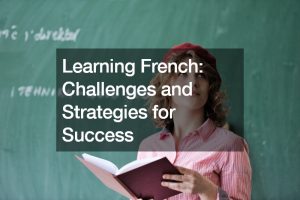Like any profession, teaching has evolved over the years. Teachers now have access to a wealth of resources and research that can help them hone their craft. And while there isn’t necessarily one “right” way to teach, some strategies are undoubtedly more effective than others. Here are three common teaching strategies that are used by many educators today.
Cooperative Learning
Cooperative learning is a strategy that involves students working together in small groups to complete a task or project. This type of learning is beneficial because it helps students build social skills, learn how to communicate effectively, and resolve conflicts. Additionally, cooperative learning can promote higher-level thinking and encourage students to take responsibility for their own learning.
In most cases, cooperative learning is integrated into child care centers because it is developmentally appropriate for young children. However, this strategy can be used with students of all ages. The practice of cooperative learning can take many forms, so teachers should experiment to find what works best for their students and classroom.
Problem-Based Learning
With problem-based learning, students gain knowledge as they work to solve issues they may encounter in the real world. This type of learning is often used in STEM classrooms, but it can be adapted to any subject area. PBL is beneficial because it allows students to apply their learning to real-life scenarios. Additionally, PBL can promote higher-order thinking, creativity, and collaboration.
PBL typically follows a specific process: first, students are presented with a problem; then, they brainstorm possible solutions; next, they select the best solution and create a plan to implement it; finally, they carry out their plan and reflect on the results. This type of learning can be time-consuming, so it is often used in conjunction with other teaching methods.
Differentiated Instruction
Differentiated instruction is a strategy that considers the different levels of ability and readiness within a class. This type of instruction often involves using other materials and activities to meet the needs of all learners. For example, a teacher might provide a more challenging activity for advanced students while simultaneously providing a less difficult activity for struggling students. Differentiated instruction can be an effective way to ensure that all students are challenged and engaged in the classroom.
Blended Learning
Blended learning is a combination of face-to-face instruction with online learning. This strategy can be beneficial because it allows students to receive individualized attention while also having the flexibility to work at their own pace. Additionally, blended learning can give students access to resources they might not otherwise have, such as online courses or videos. This is a newer teaching method, so educators are still exploring the best ways to implement it in the classroom.
The importance of teaching strategies
It’s no secret that every student learns differently. Some students are visual learners and need to see things to fully grasp an idea. Meanwhile, others are auditory learners, which means they learn best by hearing information. And still, others are kinesthetic learners and need to touch, move, and experience things to understand them.
Teachers must be aware of these different learning styles and, as a result, must employ various teaching methods to reach every student in their class. By using a mix of methods—including but not limited to lectures, discussions, hands-on activities, and multimedia presentations—teachers can ensure that all of their students are getting the most out of their education.
For a teacher to fully understand the importance of teaching strategies, they must first understand the different types of learners. Only then can they begin to implement various methods in their classroom. Here’s a more detailed look at each:
Visual Learners
Visual learners are those who need to see things to understand them. They often struggle with listening-based tasks such as lectures or discussions because they can’t “see” what’s happening. When teaching visual learners, it’s essential to use plenty of charts, graphs, diagrams, and other visual aids.
Auditory Learners
Auditory learners are those who need to hear things to understand them. They often have trouble with tasks that require reading or writing because they can’t “hear” the information in their head. When teaching auditory learners, it’s important to use plenty of verbal explanations and examples because they can’t “see” what’s going on.
Kinesthetic Learners
Kinesthetic learners are those who need to touch, move, and experience things in order to understand them. They often have trouble sitting still for long periods of time because they need to be constantly moving in order to stay engaged. When teaching kinesthetic learners, it’s important to use plenty of hands-on activities and experiential learning opportunities.
Final thought
There is no one-size-fits-all approach to education. Different students will respond to different teaching strategies. However, these three strategies are commonly used by many educators today. By using a variety of instructional methods, teachers can ensure that all students have the opportunity to learn and grow.







